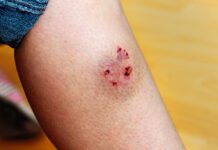Aggression in dogs is defined as hostile dog behavior with the threat or intent of causing harm. This can be directed toward humans, other dogs, or other species, and can result in a bite. Excessive aggression can become a problem. A study in Australia found that undesired behaviors like aggression were the reason 30% of dogs under the age of 3 were euthanized. Aggression is a natural behavior, but it is unacceptable by many human standards.
Responding to a Threat
Dogs can become aggressive when they perceive a threat to themselves or to something or someone who is of high value to them. Types of aggression include:
- Maternal
- Pain
- Fear
- Social conflict-related
- Territorial
- Possessive
- Sexual
- Disease-associated
For some dogs, just being on a leash, called “leash aggression,” can bring out unusual aggressive behaviors, possibly due to frustration.
Warning signs of aggression in dogs may include:
- Stiff body posture, rigidity
- Hard stare
- Growl, a low-pitched rumble in the throat
- Bark, a sharp, short vocalization that can be emitted singly or in bursts
- Lip lifting, baring of teeth
- Snarl, a combination of the growl and lip lift
- Piloerection, a raising of the hairs, usually seen on the dorsum, or top line of back
- Lunge
- Snap
Please note that a wagging tail does not mean “I’m friendly!” The waving tail indicates a willingness to interact, and that could be in either a friendly or aggressive manner
Growling Is a Warning
Growling is a warning that the dog is uncomfortable with the current situation. Do not punish your dog for growling. Instead, remove the dog from the situation that is upsetting him before he snaps or bites.
Never correct or punish growling. If the growl is punished, the dog may learn to inhibit his growl to avoid punishment. That can backfire and turn him into the dog who bites without warning because he is unable to express how uncomfortable he is before he gets to the point where he needs to act out.
Research Into Causes of Aggression
A 2022 study published in Animals looked at possibilities for aggression, interestingly including the lack of a properly balanced diet. More research needs to be done, but it’s a call to all dog owners to buy quality dog food that is complete and balanced nutritionally.
A study published in Scientific Reports in 2021 found that these factors in dogs increased the probability of aggressive behavior toward people:
- older age
- being male
- fearfulness
- small body size
- lack of conspecific company
- being the owner’s first dog
These researchers considered breeding/genetics as causes of aggression to explain variances among breeds, but they also found that improvements in owner education could help alleviate some aggression in dogs.
If you’re dealing with an aggressive dog, talk with your veterinarian about your options and ask for a recommendation for a board-certified veterinary behaviorist or fear-free professional trainer to help you with it. And read our article on ways to properly respond to aggression.






